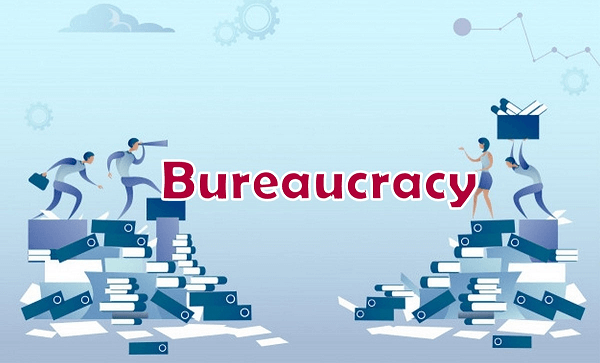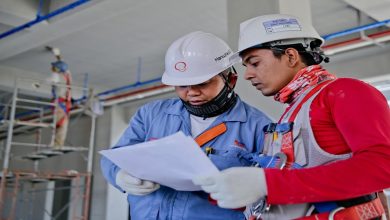Understanding Bureaucracy and Public Administration

Public administration and bureaucracy are cornerstones of modern governance, essential for implementing policies, managing public programs, and ensuring the smooth operation of governmental functions. Bureaucracy is an administrative system of non-elected officials responsible for implementing government policies and programs.
This article delves into the intricate history, functions, theoretical perspectives, and growth of public administration and bureaucracy, providing a comprehensive overview of their significance in contemporary society. Public administration and bureaucracy are cornerstones of modern governance, essential for implementing policies, managing public programs, and ensuring the smooth operation of governmental functions, with designing organizational structure playing a critical role in their efficiency and effectiveness.
The Concept of Bureaucracy
Bureaucracy refers to an administrative body composed of non-elected officials responsible for carrying out government policies and programs. Historically, nations have relied on bureaucratic systems to manage public affairs. In the United States, bureaucracy started as a small entity but has grown significantly, becoming integral to government operations. Bureaucrats, or civil servants, hold vital roles across all government areas, from high-level foreign affairs to local regulatory agencies, selected for their expertise.
Functions of Bureaucracy
Modern society relies on effective government operations to provide public goods, enhance the quality of life, and stimulate economic growth. Bureaucracy manages these functions through activities such as taxation, homeland security, immigration, foreign affairs, and education. As society expands, managing bureaucratic operations and public administration becomes increasingly challenging. Public administration encompasses both the implementation of public policy within government bureaucracies and the academic study that prepares civil servants for these roles.
Historical Evolution of Public Administration
Public administration has ancient roots, with organized public affairs dating back to societies like Egypt and Rome. For example, the Romans created distinct administrative hierarchies for military affairs, justice, finance and taxation, and foreign affairs, each managed by a principal state officer. The modern concept began developing in 17th and 18th century Prussia, where the government started selecting and managing civil servants. These officials administered provinces according to the rules of Prussian sovereign kings and were required to have a university degree in cameralistics, the science of public finance.
During the French Revolution, civil servants transitioned from being regime instruments to public power advocates, responsible for maintaining health, public order, and morality. In the United States, the formal establishment of public administration occurred in the early 20th century, becoming more prominent during the Great Depression and World War II, when human relations, economic planning, and policymaking became essential facets of the field.
The Role of Public Administration in Society
Public administration involves managing policies, programs, and services by governmental organizations at various levels. It significantly impacts society by advocating for public awareness, ensuring effective policy implementation, regulating laws, and fostering economic growth.
Advocacy and Public Awareness
Public administrators act as support for individuals in need, ensuring they have a voice in the policymaking process. They develop strategies encouraging communities to use the services provided by policies, interfacing directly with the public to explain regulations and policies.
Turning Policy into Reality
Public administrators are involved in all stages of the policy cycle, including planning, developing, executing, and monitoring, to ensure efficient policy implementation.
Conformity and Regulation of Laws
Officials establish regulations and standards in business practices, environmental regulations, public health, and consumer protection. They ensure fair, safe, and ethical practices in both the private and public sectors, aiming to protect community members, employees, and consumers.
Developing the Economy
Public administrators in economic planning and development agencies formulate policies to foster economic growth, attract investments, and create employment opportunities. They offer support services to businesses, provide incentives, streamline investment procedures, and facilitate international trade by promoting exports, reducing trade barriers, and negotiating trade agreements. Through public-private partnerships, public administrators collaborate with both sectors, leveraging private resources and expertise while ensuring public sector accountability.
Theoretical Perspectives on Public Administration
Public administration theory explores the significance of government and bureaucracy’s role in democratic systems. Three primary branches of theory have evolved:
Classical Public Administration Theory
This theory aligns with Woodrow Wilson’s ideals, prioritizing efficiency, professionalization, a pragmatic approach to bureaucracy, and merit-based promotions. The classical system includes a strict definition of responsibilities, objectives, and control over functions. However, since the 1980s, governments have largely replaced the classical system with market-based models.
New Public Management Theory
Emerging in the 1980s, New Public Management Theory (NPM) aimed to make the civil service more efficient by utilizing private-sector management models. It advocates decentralized service delivery, giving local agencies more freedom in how they deliver services to citizens. NPM seeks to replace traditional public administration’s disciplinary, academic, or moral emphasis with a business-like perspective.
Postmodern Public Administration Theory
Postmodern Public Administration Theory examines the inner workings of government entities linked to the capitalist models of the late 20th and 21st centuries. It explores the complexity and nuances of modern bureaucratic systems.
Growth and Challenges of Bureaucracy
The U.S. bureaucracy began modestly under President George Washington, focusing on essential tasks. Washington’s tenure saw the creation of the Department of State for international issues, the Department of the Treasury for coinage control, and the Department of War to administer the armed forces. The rise of centralized party politics in the 1820s and industrialization in the late 19th century significantly expanded the bureaucracy.
The Spoils System
Under President Andrew Jackson, the spoils system introduced political patronage, where political appointments were based on party loyalty. This system enforced party loyalty by tying the livelihoods of party faithful to the success or failure of the party. However, it also led to inefficiencies and corruption, prompting calls for reform. The Pendleton Act of 1883 marked a significant reform, establishing a merit-based system for federal employment.
Bureaucratic Expansion
The 20th century saw significant bureaucratic growth, especially during the Great Depression and World War II. President Franklin D. Roosevelt’s New Deal programs expanded the federal bureaucracy to revive the economy, stimulate development, and generate employment. New regulatory agencies and social programs were established, including the Federal Deposit Insurance Corporation, National Labor Relations Board, Securities and Exchange Commission, and Social Security Administration.
Under President Lyndon B. Johnson’s Great Society programs in the 1960s, the federal bureaucracy grew further, reaching 2.2 million employees. These programs aimed to alleviate poverty, improve education, and provide healthcare, requiring a larger bureaucratic workforce. The expansion of the federal bureaucracy became a rallying cry for conservatives, leading to efforts to reduce its size during President Ronald Reagan’s tenure.
Conclusion
Bureaucracy and public administration are crucial for implementing public policy, managing government operations, and ensuring societal well-being. Understanding their historical evolution, functions, theoretical foundations, and growth challenges provides insight into their importance in modern governance. As society continues to evolve, the role of public administration and bureaucracy will remain essential in addressing new challenges and opportunities, shaping the future of public service and governance.





